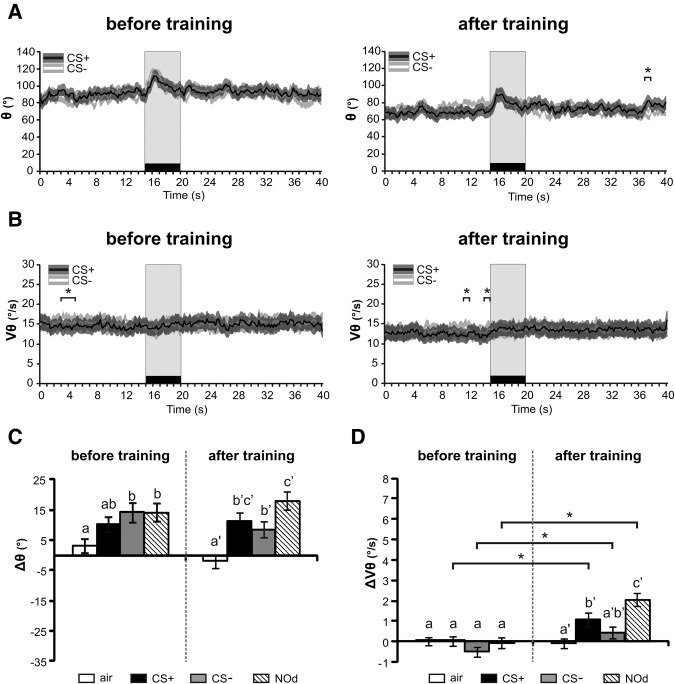Figure 7.
Effect of aversive conditioning on antennal responses to odors. (A,B) Temporal variation curves (averaged every 200 msec) before and after training for (A) antenna except in very few instances either before or long after the stimulus angular position (θ) and (B) angular velocity (Vθ). No difference appeared between CS+ and CS− (stars, paired t-tests at every second of the recordings (* P < 0.05)). (C,D) Histograms showing the change in C angular position (Δθ) or D angular velocity (ΔVθ) during odor presentation (during–before odor) for the air control (white), the CS+ (black), the CS− (light gray) and the novel odorant (NOd, stripes), before and after conditioning. All odorants induced a backward antenna motion both before and after training and antenna velocity increased after training for all odorants. No associative (i.e., CS+ specific) effect of aversive conditioning was observed. Different letters indicate significant differences in paired t-tests performed either before or after conditioning (P < 0.05). Stars and different letters indicate significant differences in paired t-tests (P < αcorr1 = 0.0125, N = 68).

